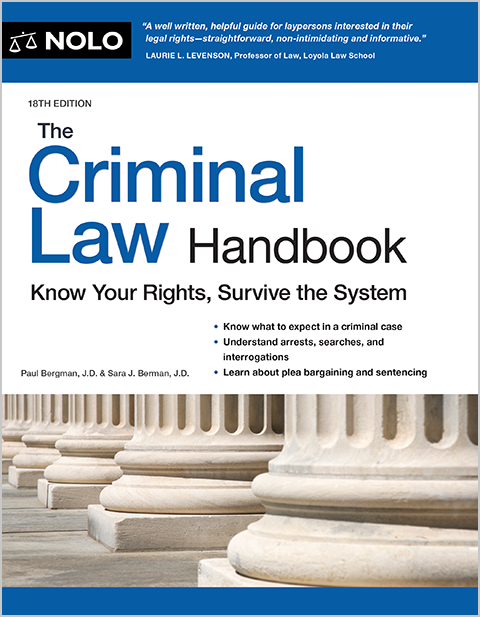If your child has frequent seizures despite medication, and you meet the low-income eligibility requirements, your child should qualify for SSI.
Epilepsy—also known as seizure disorder—is a neurological dysfunction involving episodes of abnormal electrical activity in the brain. Some types of epilepsy cause loss of consciousness and convulsions, while other seizures manifest alterations of awareness (such as involuntary staring spells) or unusual psychomotor behavior.
Epilepsy may result from cerebral palsy or brain trauma, tumor, or infections, but sometimes the cause is unknown. Medication is typically successful at reducing the number and intensity of seizures, but in some cases seizures can persist despite treatment, and can cause significant functional limitations in both adults and children.
- Does a Child With Epilepsy Qualify for Disability Benefits?
- How to Get Disability for Seizures by Meeting the Child Listing for Epilepsy
- How Your Child Can Get Disability For Seizures Without Meeting the Epilepsy Listing
- Medical Records That Help Your Child Claim Disability With Epilepsy
- How Much is a Disability Check for Seizure Disorder?
- Applying for Disability Benefits for a Child With Epilepsy
Does a Child With Epilepsy Qualify for Disability Benefits?
Children with epilepsy can be eligible for Supplemental Security Income (SSI) if their parents have low income or assets. Children who have at least one parent who is collecting Social Security retirement or disability insurance (SSDI) benefits will become eligible for SSDI when they turn 18. At that point, however, they need to undergo a "redetermination" to see if they still qualify for disability under the rules for adults with epilepsy.
How to Get Disability for Seizures by Meeting the Child Listing for Epilepsy
Children with frequent, uncontrolled seizures may qualify for disability under Social Security's Blue Book listing 111.02 for epilepsy. The exact amount and frequency needed to get disability under this listing depends on the type of seizures your child has.
Generalized Tonic-Clonic Seizures
Generalized tonic-clonic seizures are also known as grand mal seizures or convulsive seizures. During a tonic-clonic seizure, your child experiences violent muscle contractions and a loss of consciousness. In order to meet listing 111.02(A) for this type of epilepsy, your child's seizures must occur at least once a month for three consecutive months, despite taking prescribed medication.
Dyscognitive Seizures
Dyscognitive seizures—including partial (focal) seizures, complex partial (psychomotor) , and absence (petit mal) seizures—are characterized by an altered state of awareness or responsiveness. In order to meet listing 111.02(B) for this type of epilepsy, your child must have dyscognitive seizures that occur at least once a week for three consecutive months, despite taking prescribed medication.
Social Security doesn't consider nonepileptic seizures and pseudoseizures under this listing. Febrile seizures (those that happen during fevers) in young children can be considered under listing 111.02 only if the seizures also occur outside of feverish periods and the child has a diagnosis of epilepsy.
How Your Child Can Get Disability For Seizures Without Meeting the Epilepsy Listing
Even if your child doesn't meet the requirements of listing 111.02 exactly—say if they have dyscognitive seizures every month instead of every week—they can still qualify for disability benefits if they have limitations that are "functionally equivalent" to the listings. Functional equivalence just means that your child's seizures are basically as severe as those contemplated by the listing, despite not matching the criteria exactly.
In order for your child to get disability benefits by functionally equaling the listings, you'll need to show that their seizures result in "marked" limitations in two, or an "extreme" limitation in one, of the following areas:
- acquiring and using information
- attending and completing tasks
- interacting and relating to others
- moving about and manipulating objects
- caring for self, and
- health and physical well-being.
"Marked" limitations aren't as bad as "extreme" limitations, but they still represent significant functional difficulty in a particular domain. During tonic-clonic seizures, for example, a child might physically injure themselves, to varying degrees of severity. It's likely that Social Security would recognize any injury sustained from a seizure as a marked limitation in physical well-being, but if your child's convulsions require them to be hospitalized each time, the agency is likely to find an extreme limitation in that same area.
Medical Records That Help Your Child Claim Disability With Epilepsy
Medical records are the most important part of your child's disability claim. Social Security can't award your child benefits without documentation of seizure activity, and evidence that the seizures persist despite medication. So after you file your child's application for SSI, the examiner handling your child's claim will—with your permission—request medical records from their treating doctor. Your child's records should include the following:
- an initial diagnosis of epilepsy
- the results of neurological examinations
- the doctor's observations and descriptions about your child's typical seizure activity, such as convulsions or staring spells, and any pre- or post-seizure abnormalities, such as aura, disorientation, nausea, exhaustion, or headache
- a list of anticonvulsant medications your child is taking, as well as any side effects
- how frequently your child's seizures occur and whether they happen during the day or night
- a full history of the child's seizure activity, including when the seizures began
- the results of an electroencephalogram (EEG) showing patterns characteristic of seizure activity, and
- hospital records from any injuries sustained during epileptic seizures, such as tongue biting or falling.
Ideally, your child's doctor will have performed an EEG and the findings will be consistent with the type of epilepsy your child was diagnosed with. But if your child hasn't yet had an EEG, Social Security may request that they attend one (on the agency's dime), especially when the disability claim involves petit mal or other nonconvulsive seizures.
How Much is a Disability Check for Seizure Disorder?
The size of an individual disability benefits check isn't based on the type of disability. Rather, the amount your child receives if awarded benefits for epilepsy will depend on your family's total income and asset amounts. For purposes of determining how much in SSI payments a disabled child will receive, Social Security acts as if a portion of the parents' income actually belongs to the child—a process called "deeming."
Children of parents who receive SSDI and are still disabled (under the adult rules) when they turn 18 may also qualify for SSDI benefits based on their parents' work credits. Because SSDI payments are generally larger than SSI payments, this can be valuable financial help for disabled children when they reach adulthood.
Applying for Disability Benefits for a Child With Epilepsy
To set up an appointment to submit an application for SSI or SSDI through your local Social Security field office, call 800-772-1213 (TTY 800-325-0778 if you're deaf or hard of hearing) from 8 a.m. to 7 p.m., Monday through Friday. A representative will help you get started with your application and contact you to follow up with any additional information.
After you submit all the necessary medical and financial information to Social Security, a claims examiner will request your child's records, review them with a medical consultant, and make a decision on whether to award your child SSI benefits for epilepsy. Keep in mind that few claims are approved at the initial level, and you'll likely need to appeal a denial at least once before your child can get benefits. You may want to consider hiring an experienced disability attorney to help you through the appeals process and represent your child at a hearing, if necessary.
- Does a Child With Epilepsy Qualify for Disability Benefits?
- How to Get Disability for Seizures by Meeting the Child Listing for Epilepsy
- How Your Child Can Get Disability For Seizures Without Meeting the Epilepsy Listing
- Medical Records That Help Your Child Claim Disability With Epilepsy
- How Much is a Disability Check for Seizure Disorder?
- Applying for Disability Benefits for a Child With Epilepsy

